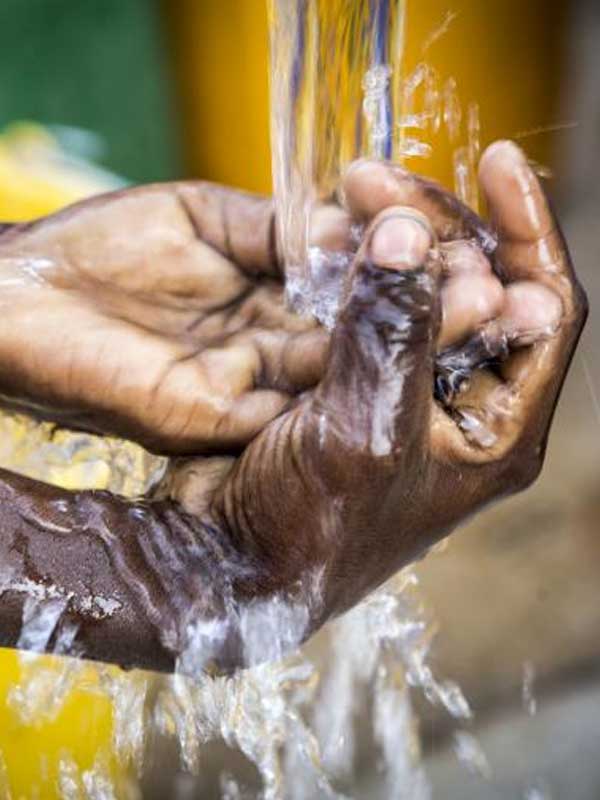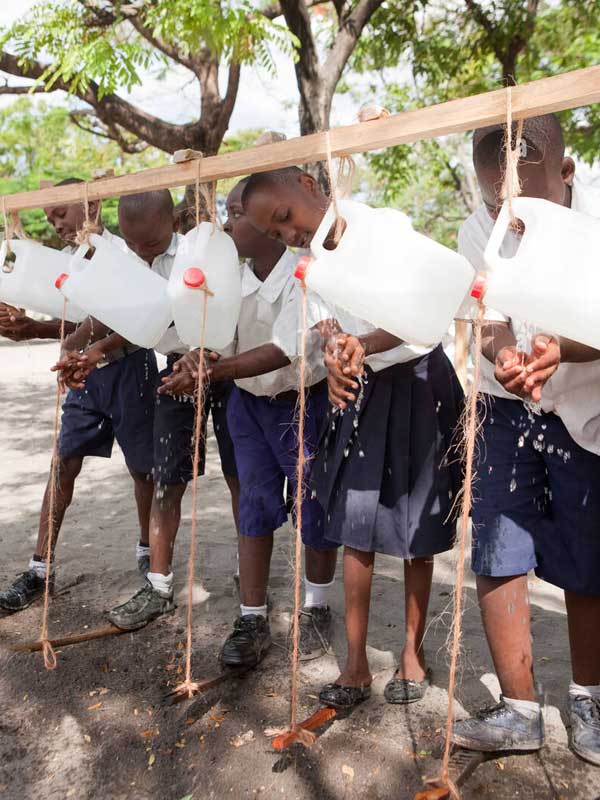Handwashing
A joint report by UNICEF and WHO revealed two out of five schools in the world lacked basic handwashing facilities before the COVID-19 pandemic.
A joint report by UNICEF and WHO revealed two out of five schools in the world lacked basic handwashing facilities before the COVID-19 pandemic.
In 2020, a joint report by UNICEF and WHO showed that 2 out of every 5 schools in the world lacked basic handwashing facilities prior to the COVID-19 pandemic. The absence of basic WASH facilities in schools exposes learners to WASH-related infections. Handwashing is important to complement the use of adequate sanitation facilities in schools. It is recommended at key times such as before and after eating and after all toileting events.

The availability of a functional handwashing station in any school is determined by:
The sustainability of handwashing facilities in schools is a pertinent topic based on concerns around acceptability and sustainability. Handwashing facilities should be inclusive and provide access to all school children including kindergarten-age who may have height challenges and children with special needs with mobility challenges. Sustainability, on the other hand, often refers to the cost-effectiveness of the facility, which relates to the cost of acquisition vis a vis the associated long-term costs of operating it. These include recurring soap expenses, costs of water consumption and theft of both soap and handwashing facilities.

Handwashing stations do not have to be costly, as demonstrated by several innovations globally, which ensure the facilities are cheaper, inclusive and sustainable. The majority of these innovative products use locally available cheaper materials such as plastics to make, for instance, simple bucket handwashing stations that have a tap at the bottom and collection bowl for the wastewater. These facilities exhibit portability and can be placed at appropriate locations within the school and at the required height (of ~75 cm) to ensure usability by all school children with varying heights.
Other handwashing facilities incorporate the washbasin (or still a bucket) and some innovative metal work around and below it for a foot-operated pedal or handle to release water from the tap, which not only prevents possible cross-contamination but also ensures usability by school children with mobility challenges. A ramp is also provided in such cases to ensure accessibility using wheelchairs.
Beyond this, an even more recent handwashing innovation has incorporated water-efficient taps and water-frugal foot pumps to reduce ongoing costs of water and soap, making it viable in schools with or without access to a piped water supply. This is supplemented by an interlocking liquid soap dispenser, which minimizes the risk of soap theft.
The options described above provide schools with an array of handwashing facilities to adopt. However, while water availability has been established to be key, other factors such as student capacity and financial resources also highly determine the type of handwashing facility most suitable for a particular school.
Oftentimes, particularly for large capacity schools, it may be difficult to have adequate handwashing stations for the student population, leading to long queues at the facility, which like urinal queues, affects class resumption time by learners. To curb this, group handwashing becomes the most suitable option. UNICEF and GIZ provide a compendium of group handwashing facilities in schools to assist schools in making this decision based on their context.